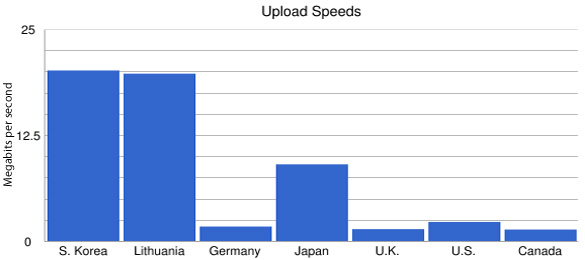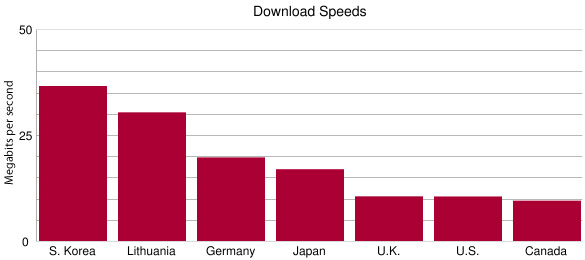The building blocks of electronic circuits are resistors, capacitors and inductors; they have been around for a while. Although a 4th component – a memristor (short for memory resistor) – was postulated 40 years ago, until recently no-one had managed to make one that functioned usefully. Memristors act as tiny (very tiny – around 3 nanometres) switches. Why is this important? Because computers are made of millions of tiny silicon based switches; the smaller the switch, the faster the computer. The most advanced transistors today are around 30 – 40 nanometres which is approaching the physical limit for such devices.
Memristors have the potential for creating faster processors and denser memory than is possible with silicon. The first application will be high capacity flash drives:
PALO ALTO, Calif. — Hewlett-Packard scientists on Thursday are to report advances in the design of a new class of diminutive switches capable of replacing transistors as computer chips shrink closer to the atomic scale.
The devices, known as memristors, or memory resistors, were conceived in 1971 by Leon O. Chua, an electrical engineer at the University of California, Berkeley, but they were not put into effect until 2008 at the H.P. lab here.
They are simpler than today’s semiconducting transistors, can store information even in the absence of an electrical current and, according to a report in Nature, can be used for both data processing and storage applications.
The researchers previously reported in The Proceedings of the National Academy of Sciences that they had devised a new method for storing and retrieving information from a vast three-dimensional array of memristors. The scheme could potentially free designers to stack thousands of switches in a high-rise fashion, permitting a new class of ultradense computing devices even after two-dimensional scaling reaches fundamental limits.
Memristor-based systems also hold out the prospect of fashioning analog computing systems that function more like biological brains, Dr. Chua said.
“Our brains are made of memristors,” he said, referring to the function of biological synapses. “We have the right stuff now to build real brains.”
In an interview at the H.P. research lab, Stan Williams, a company physicist, said that in the two years since announcing working devices, his team had increased their switching speed to match today’s conventional silicon transistors. The researchers had tested them in the laboratory, he added, proving they could reliably make hundreds of thousands of reads and writes.
That is a significant hurdle to overcome, indicating that it is now possible to consider memristor-based chips as an alternative to today’s transistor-based flash computer memories, which are widely used in consumer devices like MP3 players, portable computers and digital cameras.
“Not only do we think that in three years we can be better than the competitors,” Dr. Williams said. “The memristor technology really has the capacity to continue scaling for a very long time, and that’s really a big deal.”
As the semiconductor industry has approached fundamental physical limits in shrinking the size of the devices that represent digital 1’s and 0’s as on and off states, it has touched off an international race to find alternatives.
New generations of semiconductor technology typically advance at three-year intervals, and today the industry can see no further than three and possibly four generations into the future.
The most advanced transistor technology today is based on minimum feature sizes of 30 to 40 nanometers — by contrast a biological virus is typically about 100 nanometers — and Dr. Williams said that H.P. now has working 3-nanometer memristors that can switch on and off in about a nanosecond, or a billionth of a second.
He said the company could have a competitor to flash memory in three years that would have a capacity of 20 gigabytes a square centimeter.


 something which cost many weeks of horded pocket money. The thought of a billion transistors being compressed into a square inch would have seemed inconceivable at the time. Not so today, though.
something which cost many weeks of horded pocket money. The thought of a billion transistors being compressed into a square inch would have seemed inconceivable at the time. Not so today, though.



